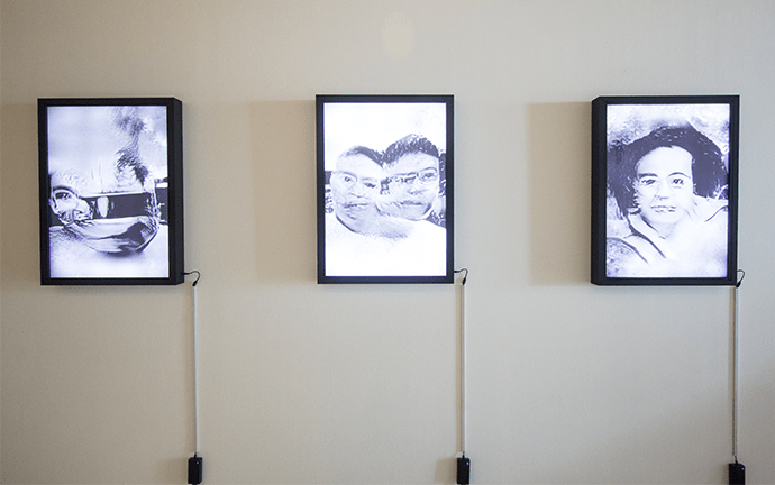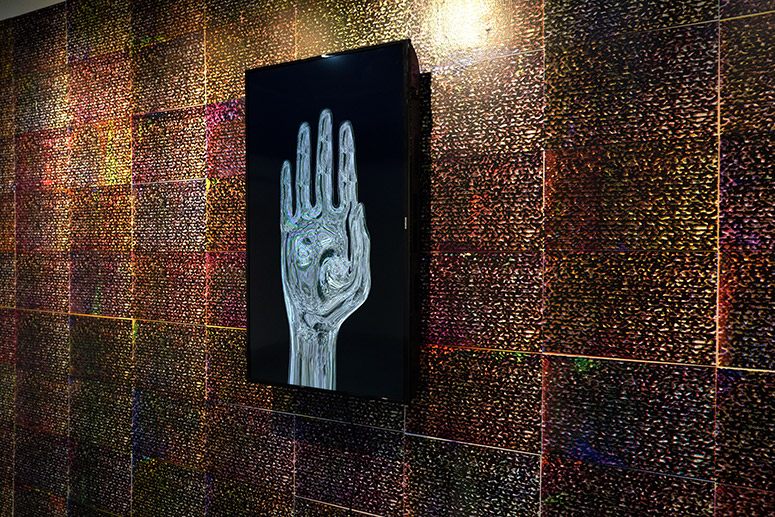Art interrogates the metaverse
When Mark Zuckerberg released the news about Facebook’s new vision of a metaverse, my reaction was dichotomous. (Simplified, the metaverse promises more connectivity through hologram meetings and digital screens on glasses.) Half of me flinched at the idea of imminent changes that portend of a “black mirror” nightmare; however, half of me had been anticipating this.
I was born in the middle of the analog and digital generation, a little before the first connection to the internet was established in the Philippines. I am a digital mongrel: old enough to have spent the majority of my childhood away from screens, and just young enough to still accept the outrageous developments in technology happening in this lifetime.
Catalyzed by the pandemic, technology’s role in our lives has been aggressively metastasizing, and a number of artists have been investigating our relationship with it. Among them are Celine Lee, Miguel Lorenzo Uy, and Christina Lopez: respectively two shortlisted and one winning artist of the 2021 Ateneo Art Awards. The three artists, also fellow digital half-breeds, raise critical questions about situation.
What did we lose?
The defining quality of the metaverse, according to Zuckerberg, will be a feeling of presence, “like you are right there with another person or in another place.” But there is a weighty difference between “feeling” present and being present.

The exhibit titled “The Length and Breadth of Depth” by Celine Lee investigates this difference by separating and interchanging the physical and virtual experience of an exhibition. It was shown in Underground Gallery last year, simultaneously in a physical gallery and in a digital platform.
In a virtual gallery available online, images of four oil paintings depicting shadows are viewable. While in the actual gallery space, visitors only see the 3D-printed versions of the paintings in the same dimensions and placements, all blank and all white.
Lee considers both the 3D prints and the virtual images as shadows: parts of a thing, but not the thing itself. The exhibit makes one feel a familiar, palpable loss: like a Zoom e-numan or being in the same room with the shell of a person immersed in their phone. It makes one wonder: when we meet with people in the metaverse, will our holograms cast a shadow? Which parts of the here and now are we going to lose?
Are we ready for the next chapter?
To further complicate the relationship between the virtual and physical world, the exhibit “Proxies (Portraits)” by Christina Lopez, exhibited in the Drawing Room Gallery last year, studied how invisible technologies can have tangible consequences in our actual lives.

As part of this exhibit, Lopez rendered portraits of paid trolls with fake identities by running over 500 profile photos through a Generative Adversarial Network, or an AI-based image generator. It resulted in misshapen, chaotic faces that exposed an unseen power for us to criticize.
The exhibit reflects how esoteric technologies, much like witchcraft, are weaponized by those in power: how our government funds are used for surveillance, or how Cambridge Analytica was employed to create and propagate the strongman image that got Rodrigo Duterte elected as president.
Zuckerberg describes the metaverse as the next chapter of the internet while promising “privacy and safety,” “open standards,” and “new forms of governance.”
Lopez’s exhibit bared how far these visions are from reality. If this is where we will start the next chapter, then we have a lot of work to do. “Proxies (Portraits)” reminds us to keep an eye on deliberately obscured technologies, to stare back with defiance at the central tower of the panopticon, and to fight disinformation when Silicon Valley demigods are not doing enough.
Who are we in all this?
Speaking of gods, blurred delineations between the identities of God, man, and technology are inspected by Miguel Lorenzo Uy in the exhibit titled “I am that I am,” also shown in Underground Gallery last year.

Part of the exhibit is “Mirage (Avatar),” a video installation of a hand reflecting satellite images of the countries that have participated in China’s Belt and Road Initiative.
“Iterations,” a series of paintings influenced by CAPTCHA technology (Completely Automated Public Turing test to tell Computers and Humans Apart), is said to train artificial intelligence in identifying images: every test we take to prove we are human nurtures this program’s intelligence.
Using narratives from the Bible and theories of creation, the exhibit illustrates the multidimensional loop that man is technology, technology is god, and man is god. The same super-mind that is made from collective parts of us has caused a delusion of being all-knowing, all-seeing, limitless gods. Thinking about this will influence how we interact with technology. Uy asks: “If we truly are the gods we all try to become, then who serves us?”
Finding answers
In Zuckerberg’s own words, “the internet’s story isn’t straightforward”. As a digital halfie, I cannot discount the upsides of a metaverse. But, regardless of how receptive we are, there are people already working to make this happen. These three exhibits posed questions that we cannot afford to ignore before moving forward. With Zuckerberg’s one status update, our lives are going to change fundamentally — virtually and physically. So I hope we find answers soon.



